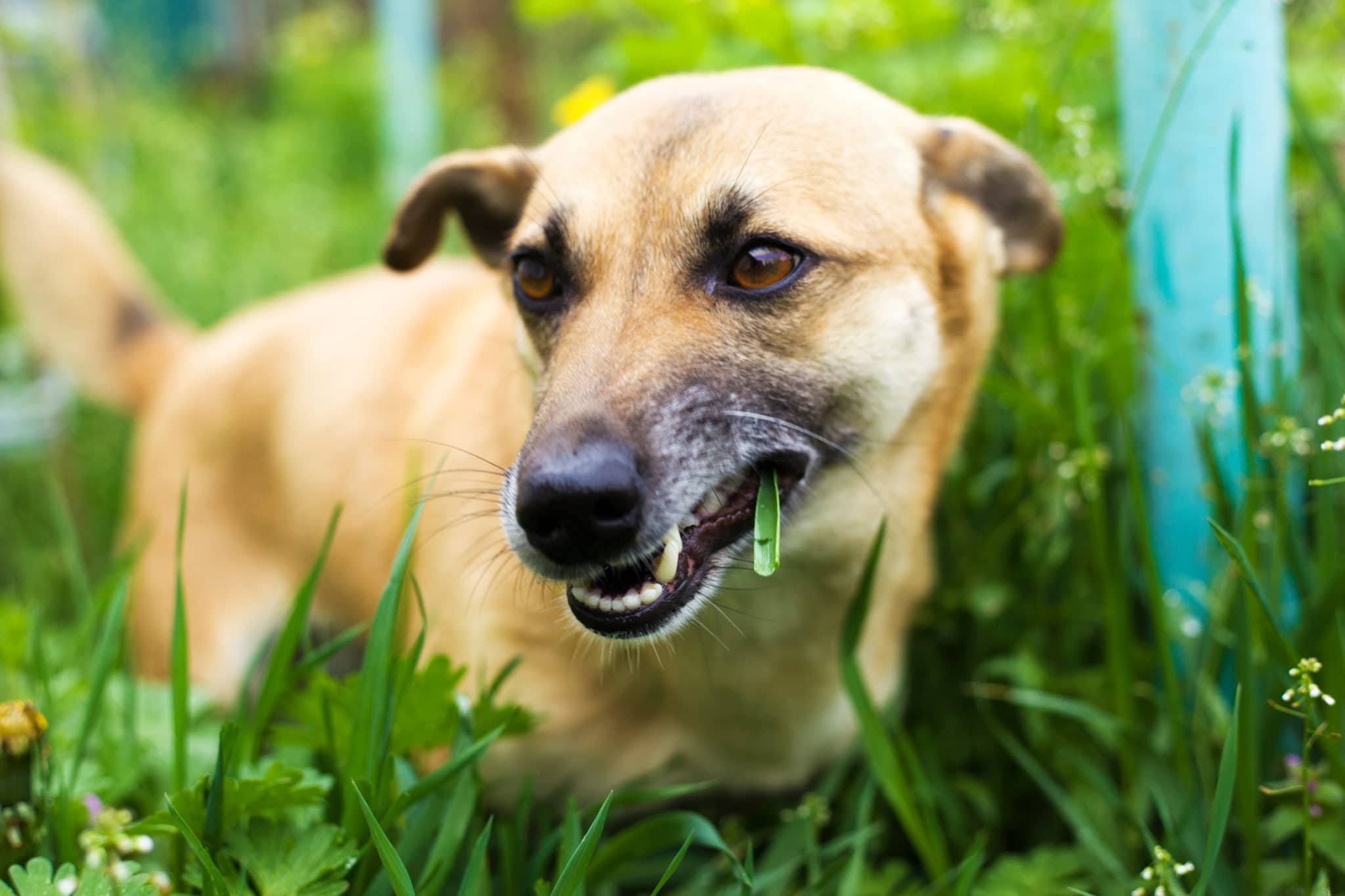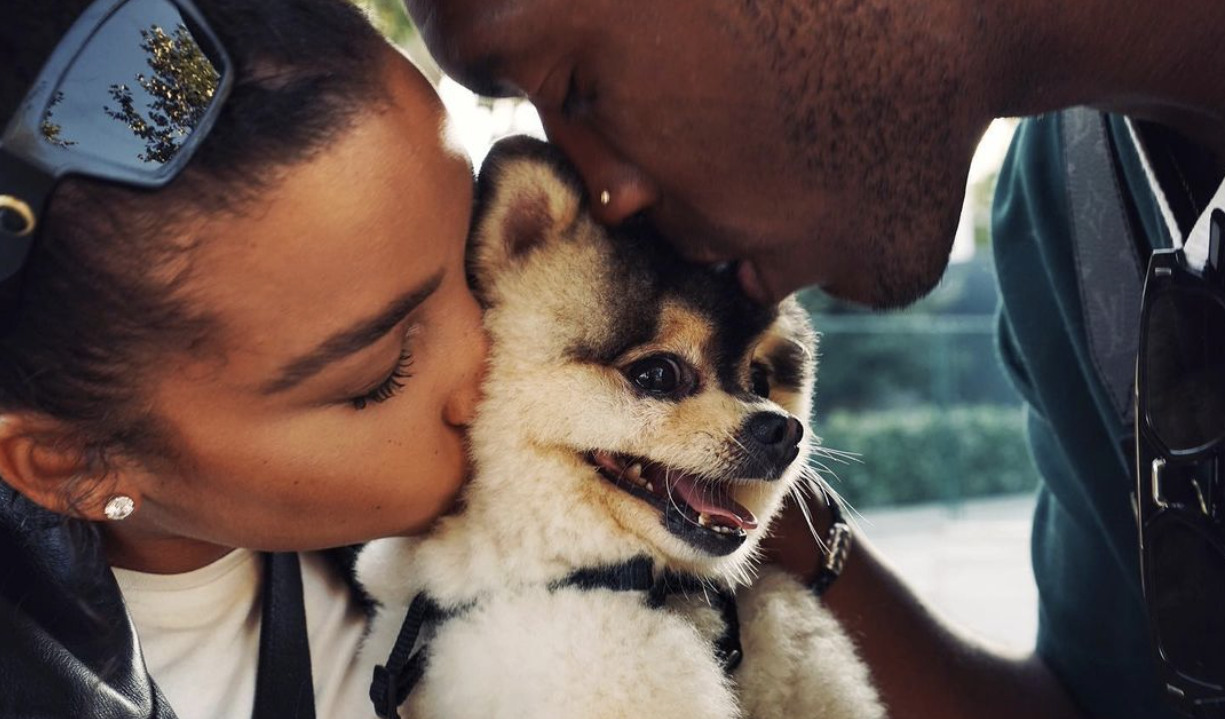In our article titled “Top 7 Clear Signs Your Pet Is Sick,” you learned some obvious and not-so-obvious clues to know that your pet is ill. However, you’ll be encouraged to hear that not every situation requires an urgent trip to your vet. In fact, many minor illnesses can and do pass on their own without medical intervention. On the other hand, there are circumstances in which it is critical that you do not wait to seek medical attention for your dog or cat. If truth be told, a matter of minutes can be enough to determine your pet’s long term prognosis or even life and death in some of these scenarios.
In no particular order, below are the top 13 signs your pet is having a medical emergency and needs to seen by your veterinarian right away.
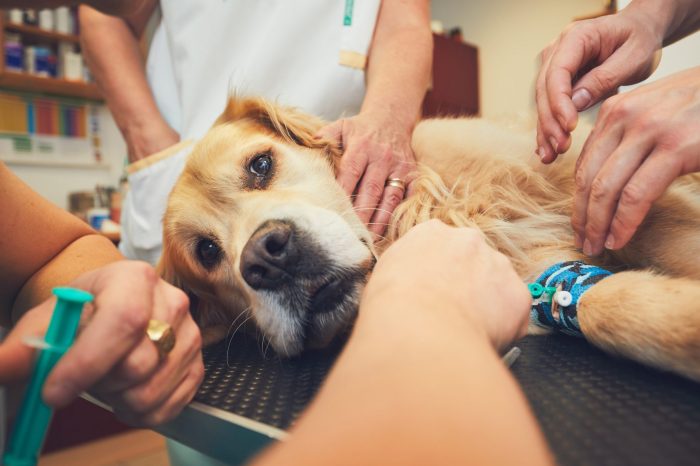
1. Your pet is bleeding uncontrollably
If your pet sustains a serious injury resulting in excessive bleeding, it’s time to go to the vet, especially if the bleeding cannot be controlled. This is because extreme blood loss can be life threatening, so it’s important not to wait.
For instructions on how to control bleeding in your pet and other life-saving information, check out our article titled “First Aid For Pets— Know What To Do In An Emergency.”
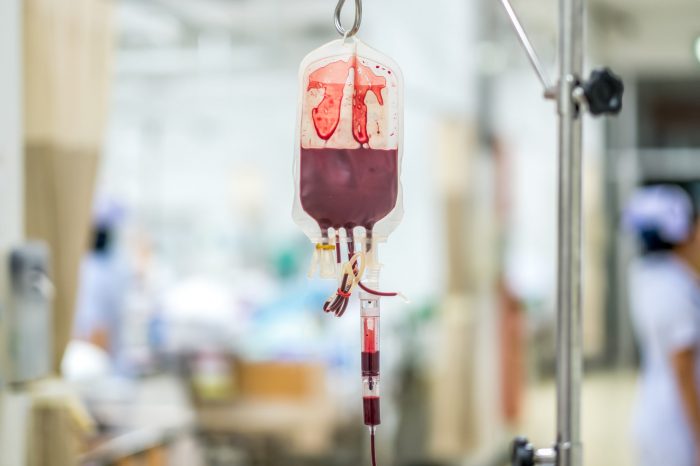
2. Your pet is retching unproductively
Next on the list is unproductive retching or vomiting. You see, “dry heaving” in dogs can be a symptom of a serious medical condition called gastric dilatation volvulus (GDV), or “bloat.” This condition occurs when the stomach rotates suddenly inside your dog’s body, resulting in an extreme build-up of gas. Bloat most commonly occurs in large breed, middle-aged to older male dogs, and is often accompanied by restlessness, loss of appetite and a distended abdomen. An x-ray is typically enough to diagnose this condition, and emergency surgery is required to treat this very serious and life-threatening problem.
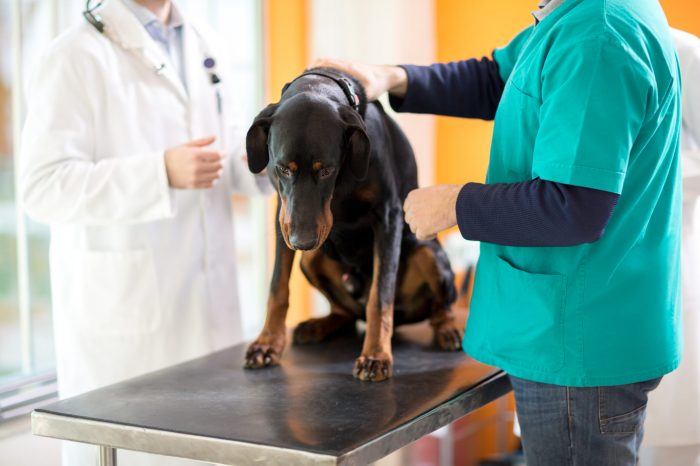
3. Your pet is in respiratory distress
Trouble breathing is an obvious sign of a medical emergency, if you can recognize it. But how would you know that your pet is experiencing respiratory trouble in the first place?
The first thing to do is to determine your pet’s resting respiratory rate. Do this by watching your pet’s chest over one minute and count the number of times he or she breathes in and out. Each inspiration and expiration is counted as one breath, and the number of breaths in dogs and cats should not exceed 30 over one minute. Keep in mind that this is a resting respiratory rate. In other words, you should not try to count your pet’s breaths when he or she is hot, excited, scared, or during exercise. The reason is, many dogs in these situations will pant, which will lead to inaccurate results.
Next, observe the manner in which your pet is breathing. Does it seem like your pet can breathe without much effort at all, or does the breathing appear forceful and labored? Dogs and cats who are experiencing respiratory difficulty may appear is distress and/or exhibit a blueish tinge to their gums.
Finally, it should be known that cats, unlike dogs, virtually never breathe with their mouths open. So if you ever observe your cat holding his or her mouth open, especially with any of the other clues mentioned, it is definitely recommended to have him or her evaluated by your veterinarian right away.
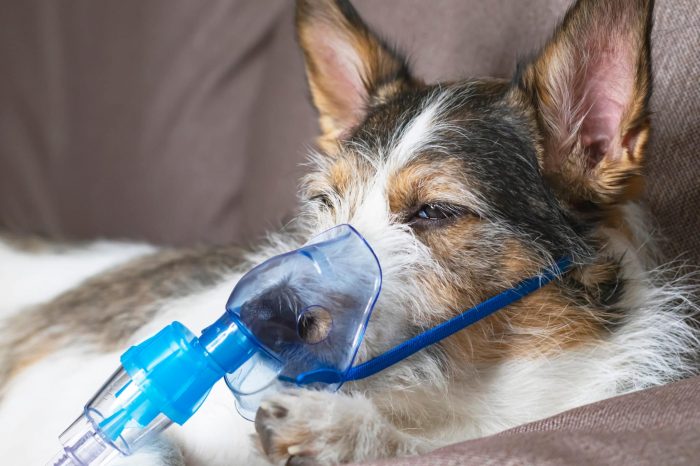
4. Your pet has collapsed suddenly
An episode of sudden collapse followed by a moment of unresponsiveness and/or disorientation is always an urgent cause for concern. Underlying diseases that can result in sudden collapse include heart failure, respiratory disease, stroke and internal blood loss. Your veterinarian will need to perform a physical exam and may recommend a few diagnostic tests to get to the bottom of this very serious clinical sign.
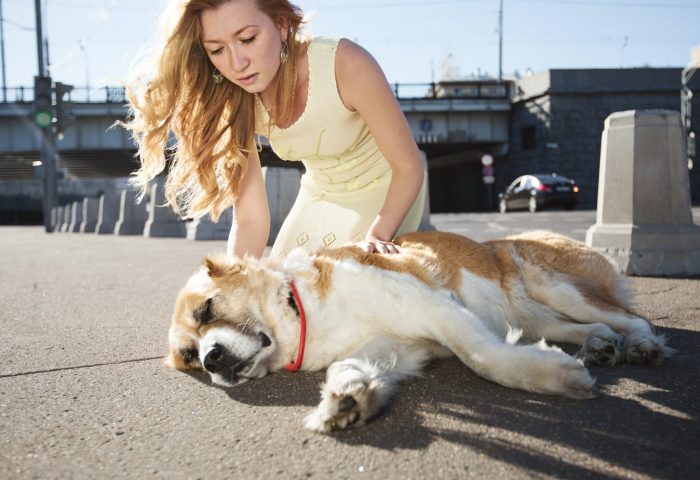
5. Your pet has become paralyzed
Paralysis, or the sudden inability to move a part of the body, is definitely a medical emergency. Dogs and cats experiencing paralysis typically lose the ability to move one or more of their limbs. Possible causes include an acute spinal injury, ingestion of a toxin, systemic or spinal infection, a stroke or certain types of cancer.
In dogs, intervertebral disc disease, or a “slipped disc” is a common cause of sudden weakness or complete paralysis in the hind limbs. This condition most commonly affects small breed dogs. While less serious cases may resolve with a simple but strict regiment of cage rest and pain relief over a number of weeks, emergency back surgery may be indicated in the more severe cases, and any delay may result in permanent damage to the spine and irreversible paralysis of the affected limbs.
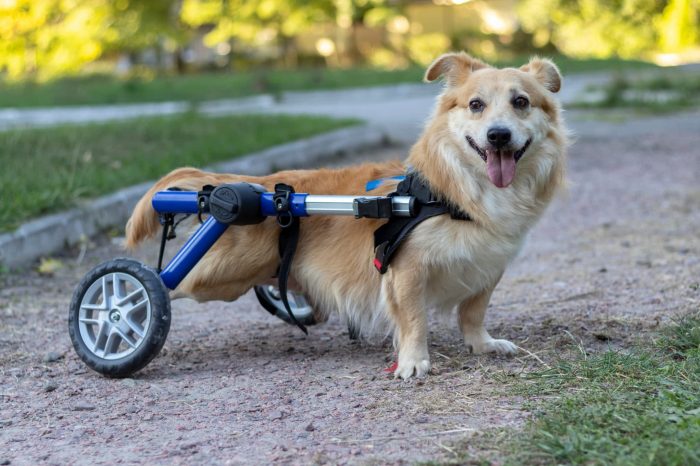
6. Your pet is having uncontrolled seizures
Most would agree that a seizure is a frightening thing to see, no matter how many times you’ve witnessed one in your pet. Thankfully, most seizures do not last very long, and animals for the most part appear fairly normal soon-after. If this is the case and it’s your pet’s first time having a seizure, you should definitely have him or her evaluated by your veterinarian at least within the next few days. However, if your pet’s seizure is ongoing and has already lasted five minutes or more, or if he or she has three or more seizures in less than 24 hours, you should head for the emergency room right away. This is because excessive seizure activity can do serious permanent damage to your pet’s brain, and ultimately the rest of their body, too.
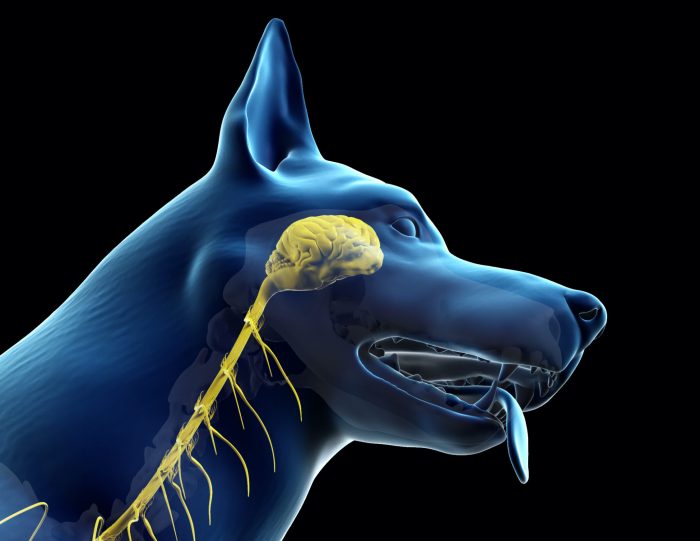
7. There is pus coming from your pet's vulva
If you ever notice a thick, off-white, odorous substance coming from your intact (not spayed) female cat or dog’s vulva, this is a major cause for concern. The reason is that this could be an indicator of pyometra, a severe and life-threatening infection of the uterus. Other signs associated with pyometra include poor appetite, lethargy, fever and vomiting. The treatment is ultimately emergency surgery to remove the pus-filled uterus from your pet’s body altogether.
To avoid this scenario, remember to spay your female cats and dogs young– ideally before their first heat.
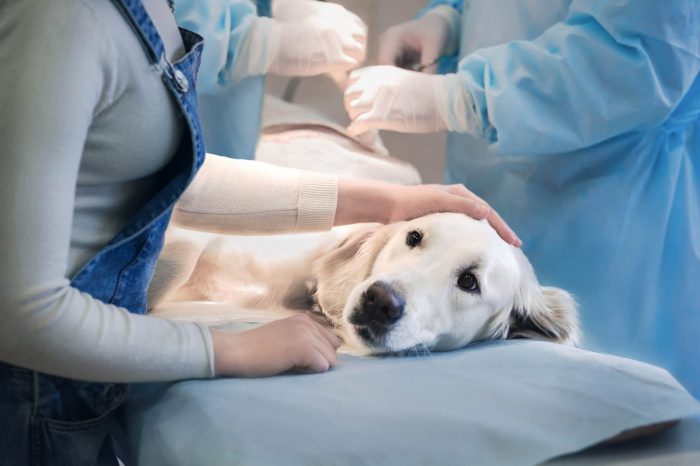
8. Your pet is unable to urinate
If your pet is unable to urinate, you’ve got a big problem on your hands. Possible causes include bladder stones, kidney failure, a tumor of the bladder, or a spinal cord disease.
In male cats, a common reason for the inability to urinate is the formation of a mucus plug within the urinary tract, resulting in urethral obstruction. This condition will be painful and often distressing to your cat, who you may observe to go to and from the litterbox frequently, vocalize or howl, and even urinate blood. If left untreated, your cat will begin to appear listless and depressed. The treatment for this condition is emergency relief of the obstruction by your veterinarian under sedation or anesthesia, typically followed by a few days of recovery in the hospital.

9. Your pet ingested foreign material
If your pet ingests something that is not food or otherwise digestible, this could result in a serious problem called a gastrointestinal obstruction. Typical clinical signs of this problem include vomiting, poor appetite and lethargy. In dogs, commonly ingested foreign materials include articles of clothing (many times socks and underwear!), toys, food wrappers or other trash items. In cats, commonly ingested foreign items include hair ties and string.
While small foreign bodies may successfully pass through your pet’s gastrointestinal tract on their own without medical intervention, others may become lodged in the system, resulting in the need for emergency surgery. If you eating something indigestible, it’s best to see your vet right away. If caught early, your veterinarian may be able to induce vomiting or retrieve the item via endoscopy, thus avoiding a major surgery for you and your pet.

10. Your pet ingested a toxic substance
Did you know that there are a number of things likely present in your home at this very moment that are actually very toxic to your pets? Common toxic household items include grapes, chocolate, many over the counter pain relievers, and rat bait. Unfortunately, items like these can cause severe damage to your pet’s organs and even be life threatening if ingested. Remember, it’s always best to seek medical attention and have a treatment plan implemented well before any clinical signs develop, as doing this will give your pet the best chance of a full recovery.

11. Your pet has suffered a traumatic accident
If your pet experiences a traumatic event, it’s best to seek medical attention without delay, even if your pet seems to appear fine following the incident. This is because a traumatic event like being hit by a car or falling from a height, for example, can cause much more damage internally than what meets the eye from the outside.
Internal injuries may include significant bleeding, bruised lungs, broken ribs, and a ruptured diaphragm or bladder. In addition, overt signs of head trauma may not be apparent immediately, but this type of injury warrants urgent medical attention too.

12. Your pet's gums are pale
If your pet just doesn’t seem right, it’s always a good idea to assess the color of his or her gums. While some animals are naturally born with darkly pigmented gums, your pet’s gums should otherwise appear nice and pink. Pale or white gums may indicate extreme blood loss, red blood cell destruction, or anaphylactic shock, which can all be life threatening problems.
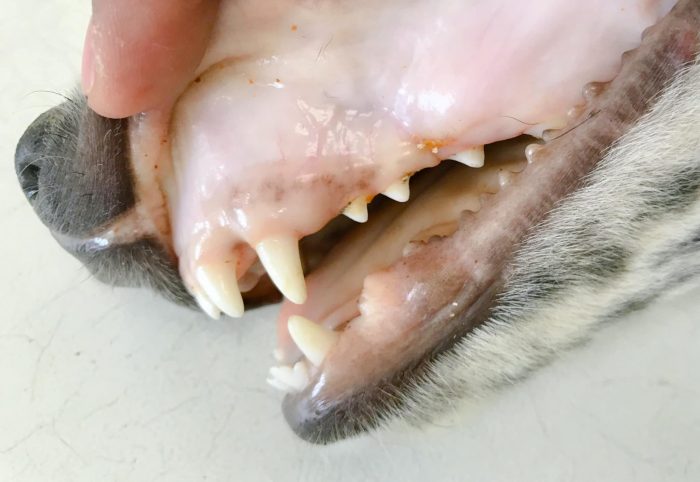
13. Your pet was bitten by a venomous animal
If your pet is bitten by a venomous animal like a rattlesnake, scorpion or black widow spider, it is imperative that you seek out medical care right away. This is because the longer you wait, the more time the toxin released into your pet’s body has to take effect. The poisons released through the bite of a venomous animal are ultimately designed to be lethal, in addition to inflicting significant pain on the victim. Thankfully, treatment protocols exist nowadays to manage incidents like these, but time will always be of the essence.
It should also be noted that applying a tourniquet to a limb that has been bitten or trying to extract the poison with your mouth are two of the many now disproven myths regarding the first aid treatment of venomous animal bites. As such, simply getting to your veterinarian without delay should be your number one priority in a situation like this.
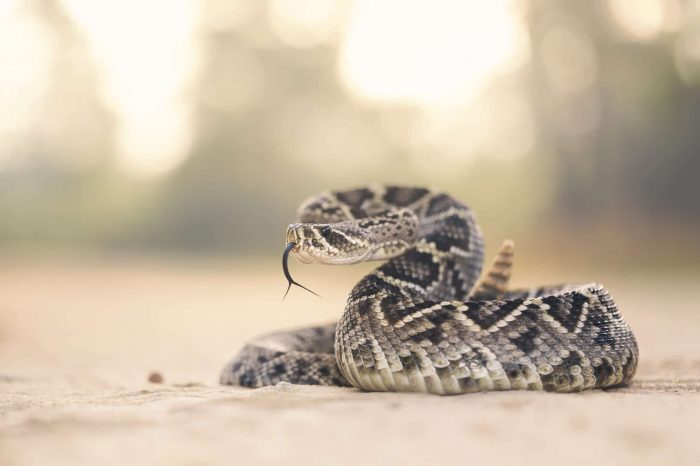
As you’ve now seen, we’ve compiled the top 13 signs that your pet is having a medical emergency so you know in advance what to look out for, should you ever find yourself in any of these life threatening scenarios.
Whether your pet is struggling to urinate, has been bitten by a rattlesnake, or just swallowed a bottle of Aspirin, our advice is clear– every minute counts, so head over to your local veterinary emergency hospital as soon as possible.

